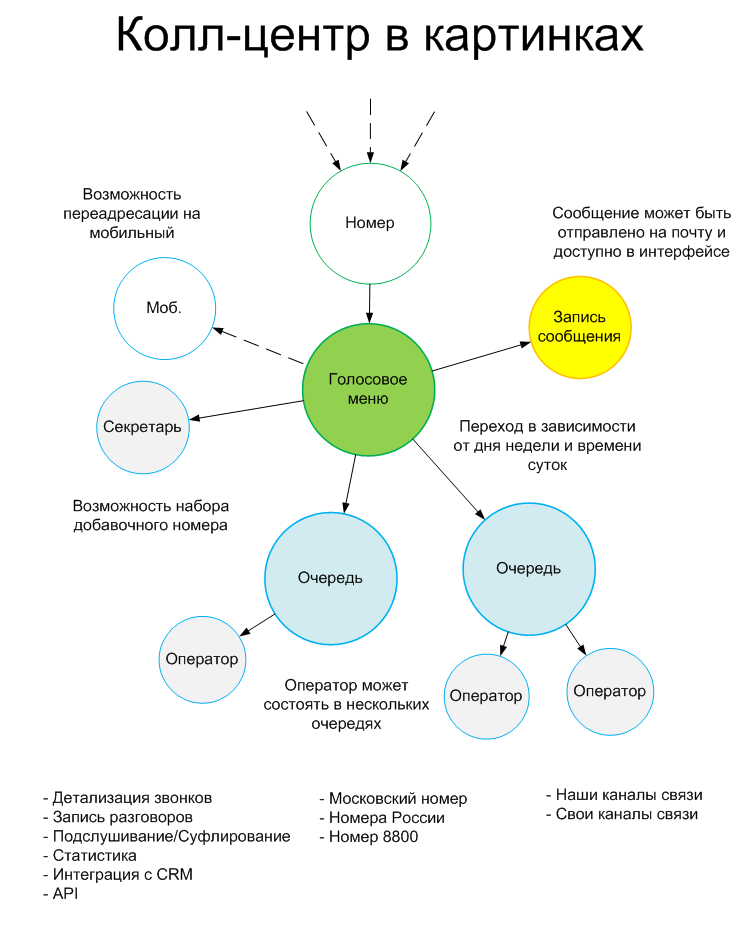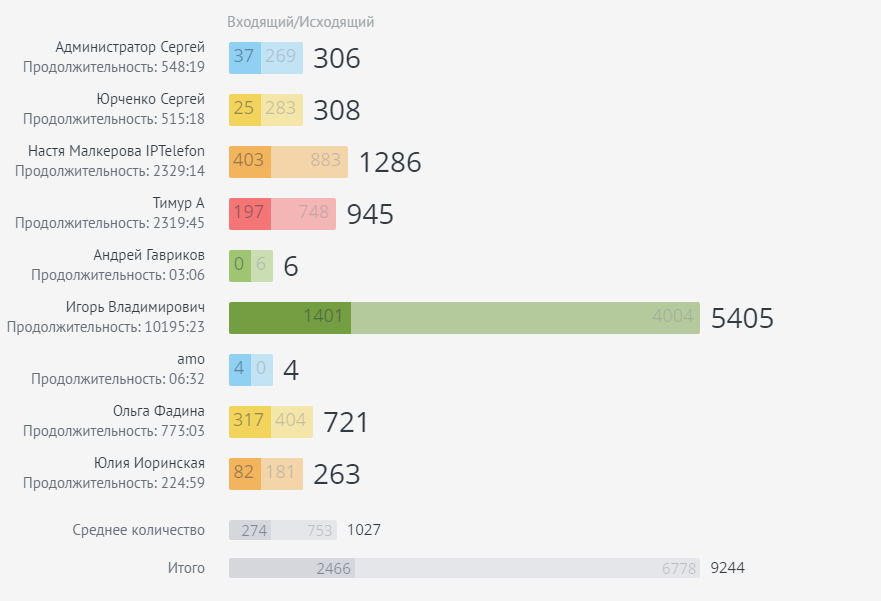Call center for a small company: symbiosis amoCRM and Hive
Any client will confirm that the Call-center is cool: it’s nice when you pick up the phone right away, it’s good if you can enter the “internal number of the subscriber” and talk with your manager, and it’s very nice when you are recognized by the phone number. And today we will tell you how an affordable call center works based on two simple cloud solutions - amoCRM and Hive.

In any company, the Call Center solves two important tasks: processing incoming calls and processing outgoing calls. For each of them, you need, firstly, to get a reliable and convenient telephony system, and secondly, the ability to automate and optimize the communication of employees with customers. And the whole call center can be implemented on the basis of the duet Hive and amoCRM.

Hive
The first element of a cloud Call Center is a virtual Hive PBX. You can access IP telephony as a service using one or more incoming numbers. And since we are considering the organization of a Call center today, each operator gets their own number in Hive, and voice menus are created for customers easily and conveniently, including complex ones with different depths of choice and the ability to switch to a free employee at any time.
Already on the basis of the Hive virtual telephone exchange, such functions are available as call recording, to which we have devoted a number of past posts, the ability to configure call forwarding and transfer, key parameters for call prioritization and a ready reporting section. You can get statistics of such Call-center parameters as the average waiting time on the line, the number of missed calls and so on.

Fig. Hive Call Statistics
amoCRM
But a virtual PBX would remain a virtual PBX and only if it were not for deep integration with amoCRM. This customer interaction automation system is also provided from a cloud service and even on a mobile one, so that your call-center employees can work from a smartphone or laptop and, accordingly, be generally out of the office.

Fig. Customer card in amoCRM
In the CRM-system, a card is issued for each client, the system guides it and helps operators to correctly respond to calls and call back on their own, for example, if the customer did not wait on the line or the connection was interrupted. In the CRM system, basic rules and key indicators can be set, you can program policies for communicating with customers, and analytics is also available - a sales funnel, achieving goals, and so on.
Synergy

Fig. Call center working scheme based on amoCRM and Hive
But all this has long been known - the difference between the various solutions is only in the details. However, together these two products give an interesting synergistic effect. Firstly, when processing a call (it doesn’t matter whether it is incoming or outgoing), the manager sees the client’s card in amoCRM in front of him. It is activated and displayed automatically, contains all the useful information about the interaction with the client. In particular, due to the integration of amoCRM and Hive, every conversation is recorded in the card, and all the records (which we keep in Hive for an unlimited time and in an unlimited volume) are accessible by pressing the * button.

Fig. Customer card with missed call event
Secondly, you can make a click-through call from a customer’s card. That is, the operator’s IP phone will be connected to the client if he first clicked on the “call” button in the CRM system. This can be very useful when working with the fulfillment of the set plans in CRM - it may turn out that for some clients you need a call to remind you of your intentions, while others just need to call back because they had an unanswered call.

Fig. Calling a customer directly from a CRM system
The essence of the integrated solution is that we have implemented the operator’s workplace in amoCRM, and all telephone and communication functions are available from there. A Call Center employee should have only a computer and Internet access - this is enough for a full and automated work.
Moreover, at the level of the Hive virtual telephone exchange there is a supervisor panel - a distinctive feature of the solution for a small Call-center. The head of the unit can use to manage call queues, monitor the quality of the operators, add or remove Call Center employees from the queue of processed calls, or switch them to VIP clients. On the supervisor panel, all the information comes in real time - you can even connect to the conversation in order to track the quality of work of each operator when communicating with the client.
Conclusion
Today we reviewed a real cloud Call-center, which can be created, as they say, “in two clicks” based on the Hive and amoCRM services. It, of course, is not the best way to equip jobs in a traditional contact center, but at the same time it will allow representatives of small businesses to easily and quickly establish interaction with customers with minimal cost and time and without purchasing any software. Already completed product integration facilitates the installation and configuration process, so you can try a similar scheme of virtual PBX and cloud CRM operation right now by simply registering on the Hive and amoCRM portals and ordering test access to the system capabilities.
* Recording and storage of calls is available at an additional cost.
